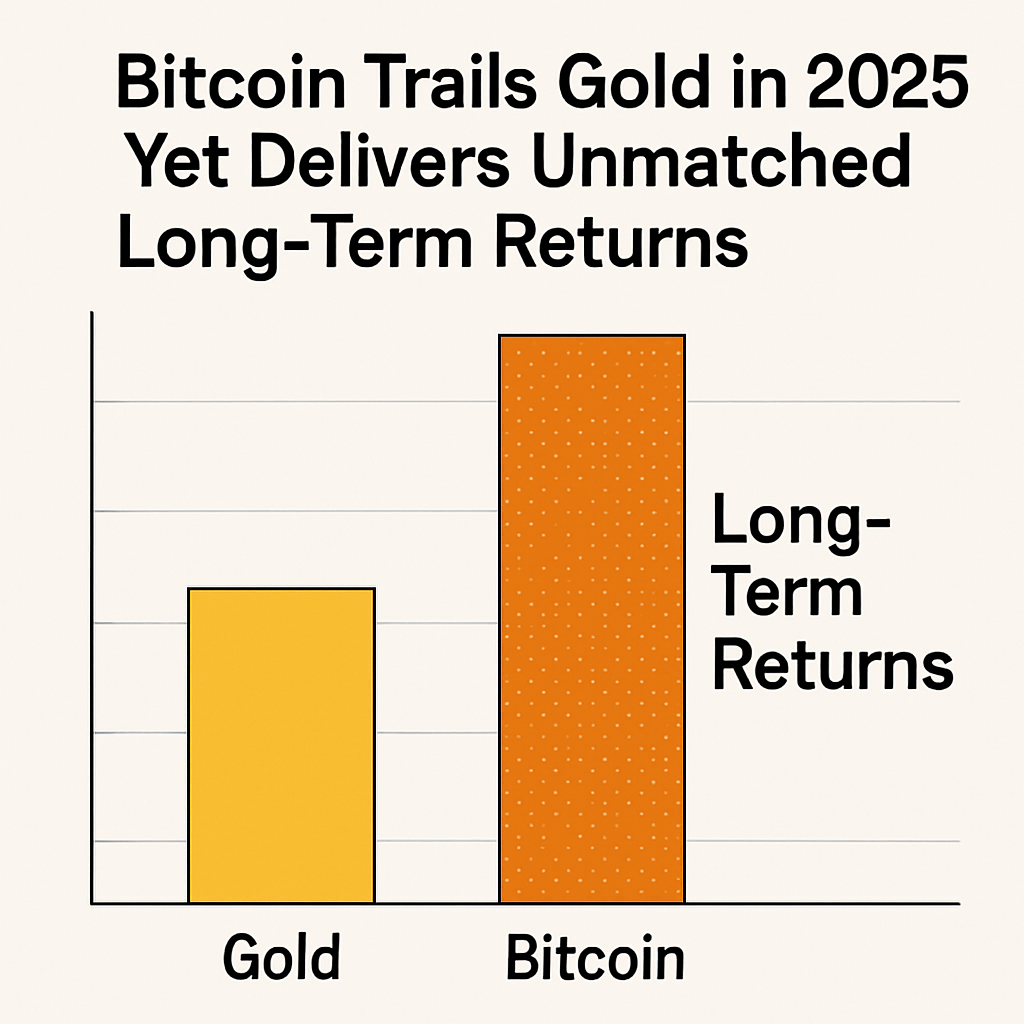Bitcoin entered the year with subdued expectations, trading in narrow ranges for much of early 2025. However, as of August 8, data compiled by financial strategist Charlie Bilello revealed that the cryptocurrency has delivered a 25.2% return year to date, second only to gold’s 29.3% advance among major asset classes. Bitcoin’s performance marked only the second time gold and bitcoin have occupied the top two spots in annual returns since record-keeping began.
Long-term performance metrics paint an even more striking picture. Bitcoin has achieved a cumulative return exceeding 38,897,420% since 2011, dwarfing the 126% total return posted by gold over the same period. Other asset classes lagged far behind: the Nasdaq 100 delivered a 1101% return, U.S. large-cap equities 559%, and U.S. small and mid-cap stocks posted 244% and 316% respectively. Emerging market equities gained just 57%, underscoring the breadth of bitcoin’s outperformance.
Annualized returns further underscore bitcoin’s dominance. Since 2011, the flagship cryptocurrency has averaged a 141.7% annual gain, compared to gold’s 5.7% and equity benchmarks ranging from 4.4% to 18.6%. Inflation-adjused calculations reinforce the asset’s resiliency against currency debasement and rising consumer prices across multiple economic cycles.
Technical analysis and on-chain metrics offer additional insights into bitcoin’s trajectory. According to data from CoinDesk Research, bitcoin’s volatility has gradually declined as market maturity increased, with daily volatility falling from peak levels above 10% in early years to around 3% in recent months. Network fundamentals, including hash rate and active addresses, have continued to strengthen, reflecting growing participant engagement and security of the underlying blockchain.
Institutional adoption also contributed to robust flows. Spot bitcoin exchange-traded funds introduced in early 2024 helped channel more than $33 billion into the market through the first half of 2025. Corporate treasury allocations by public companies have added further demand, while central bank digital currency research and regulatory progress in major economies have bolstered credibility.
Market observers caution that upside targets near $123,000 face resistance from profit-taking and shifting macro dynamics. However, proponents point to bitcoin’s fixed supply schedule and diminishing issuance rate as factors likely to drive scarcity value in the long run. “Bitcoin’s digital scarcity and decentralized architecture position it to outperform traditional hedges over time,” noted renowned trader Peter Brandt, referencing multi-year charts of dollar purchasing power.
Looking ahead, market participants will monitor macroeconomic indicators, regulatory developments and network upgrade proposals, including emerging proposals for privacy enhancements and layer-2 scaling solutions. Bitcoin’s ability to navigate these variables while preserving its core attributes will determine whether it can sustain its historic outperformance and claim a permanent role in diversified portfolios.

Comments (0)